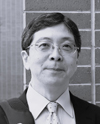 『A History of the Chinese Communist Party』(Keio University Press、2021)
『A History of the Chinese Communist Party』(Keio University Press、2021)
Nobuo Takahashi
(Professor, Faculty of Law, Keio University)
I am honored to receive the prestigious Masayoshi Ohira Memorial Award. I would like to express my heartfelt gratitude to the people associated with the foundation, the members of the selection committee, and those who supported the publication of this book.
Until the Chinese Communist Party won the civil war in 1949, it could have died suddenly at any moment. 1927, 1934, 1941 — I wouldn’t have been surprised if the organization disappeared in any of those years. Thus, the Party’s 100 years is the story of a political organization that somehow survived to seize national power and engage in extreme undertakings such as the Great Leap Forward and the Cultural Revolution before eventually becoming the world’s largest political party and exerting its influence globally.
Going to extremes is the hallmark of the Chinese Communist movement. It is because the demands of “from above” and the enthusiasm of “from below” resonated under the desire of leaders to make the Chinese Revolution part of the world revolution, and even to let the former lead the latter, so that the business of the revolution took on a radical character, starting with “runaway.” This characteristic seems not to have been lost in the era of Xi Jinping.
The Japanese view of the Chinese Communist Party also seems to be extreme. For the Japanese, the party was a beacon of hope until the 1970s, when it became a demon. But if you trace the growth of this political party, you will see that on many occasions this organization has changed its character drastically. In the 1920s, this “revolutionary party” brought landlords, rich farmers and bandits into their ranks. In the ’40s, they also started producing opium. In the ’50s, they revered the Soviet Union as a model of socialism, but in the’ 60s, they fell apart. In the ’70s, they joined hands with US, the head of imperialism. And after the ’80s, they incorporated capitalism into the principles of the system. Therefore, we cannot assume that what we see now of the Chinese Communist Party is the final form of this political organization. We also need flexibility in our thinking.
I hope this book will help the readers think about the Chinese Communist Party in the long run.
Profile
Nobuo Takahashi is professor of contemporary Chinese political history at Faculty of Law, Keio University, Tokyo. Prior to his current appointment, he was an assistant professor of political science at Kyoto University of Foreign Studies, where he taught for seven years. He is particularly interested in the history of China’s communist revolution. He has served as Director of Institute of East Asian Studies, Keio University, Oversea Dean of Political School, Xinan Jiaotong University in Chengdu, China, and President of Japan Association of Asian Studies (JAAS).

